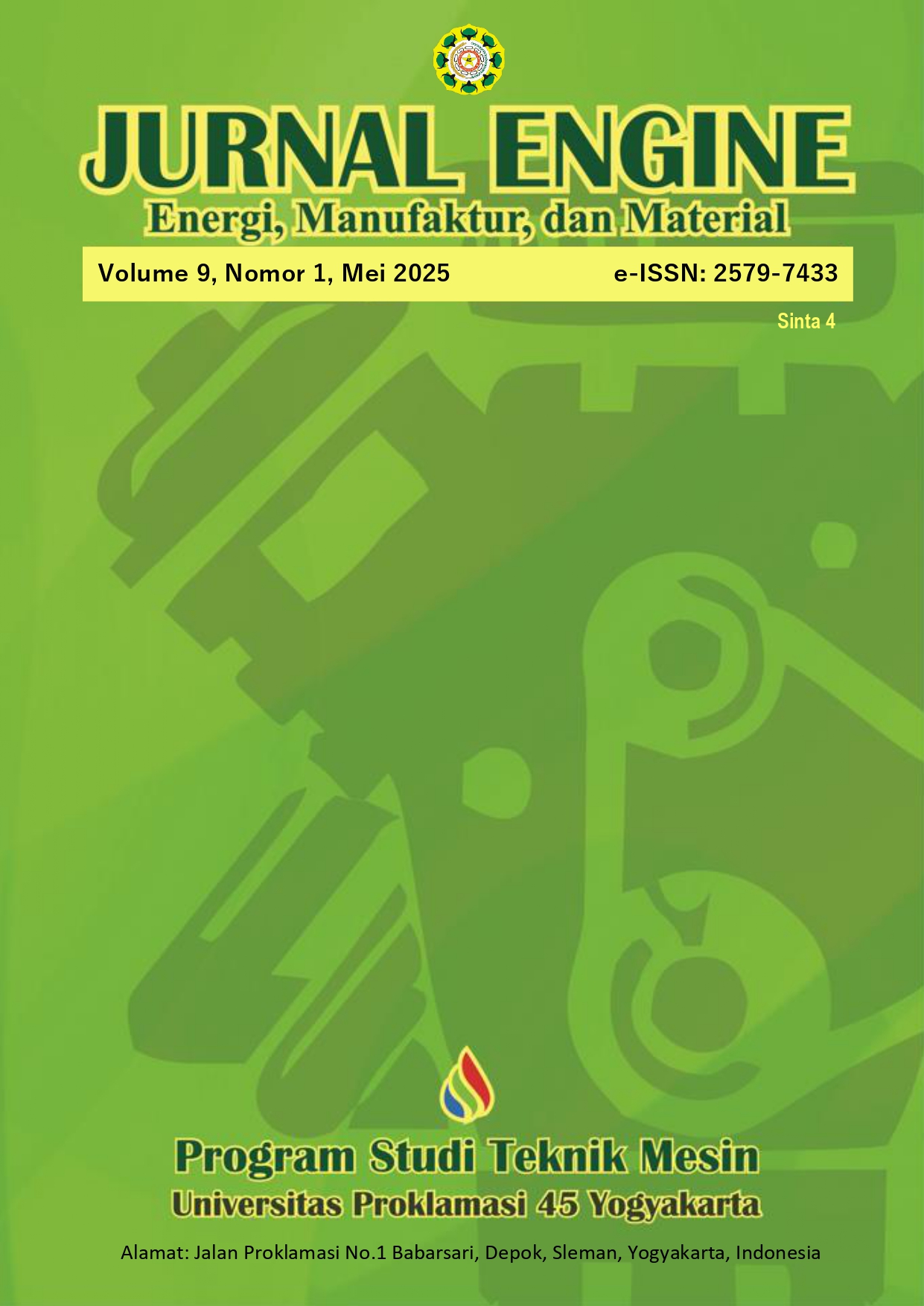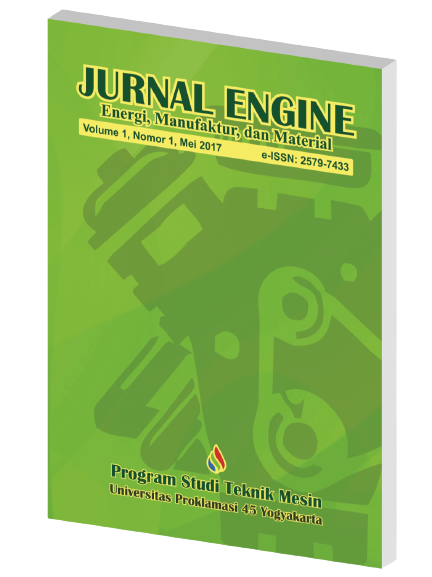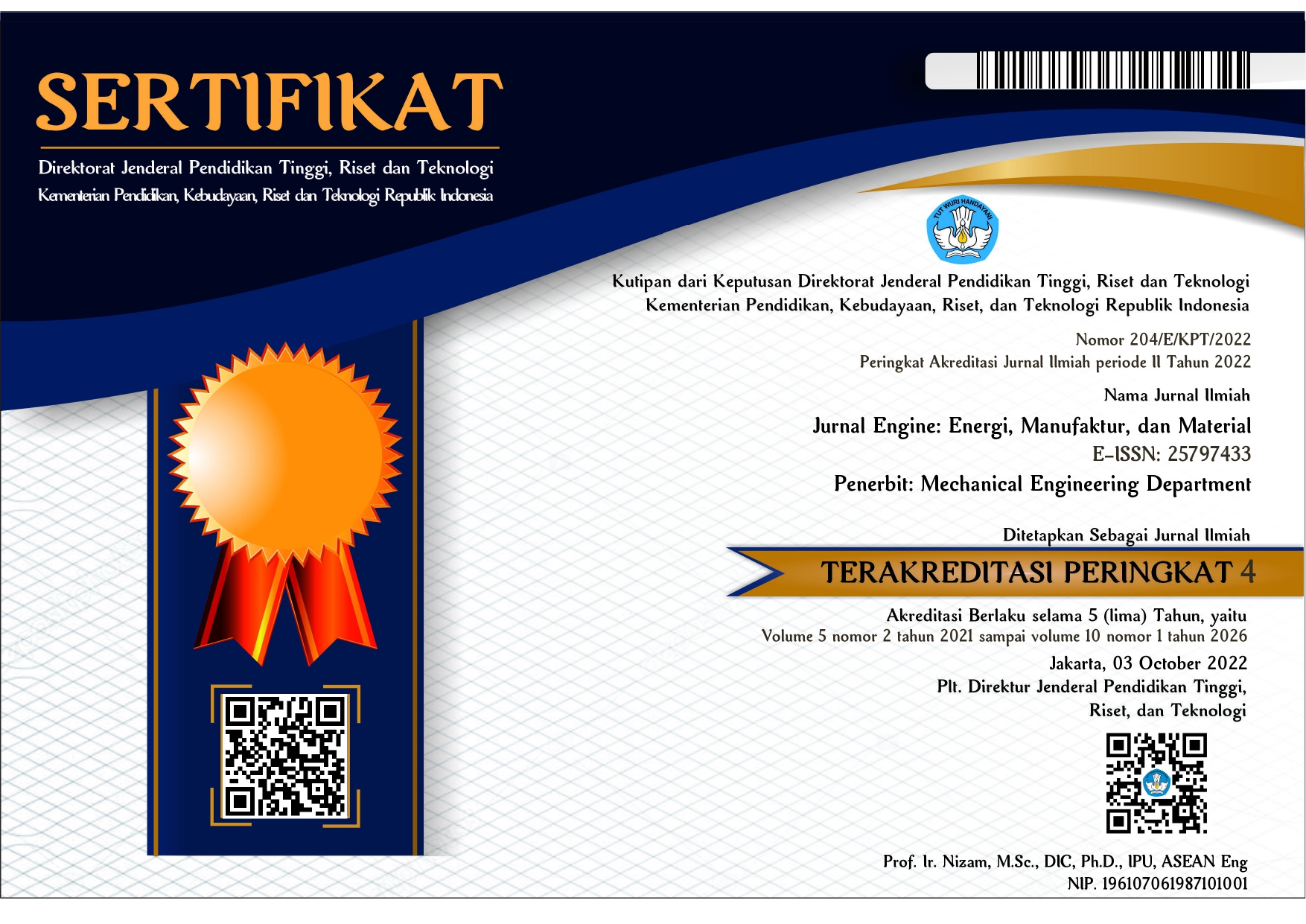Rancang Bangun Sistem Exhaust Fan Otomatis Berbasis Sensor DHT11 dan Mikrokontroler ESP32 untuk Peningkatan Kualitas Udara di Smoking Area
DOI:
https://doi.org/10.30588/jeemm.v9i1.2161Keywords:
automatic exhaust fan, DHT11, ESP32, air quality, energy efficiencyAbstract
Air pollution in smoking areas can significantly impact human health and reduce indoor air quality. Poor ventilation systems often fail to respond to real-time environmental changes, leading to increased exposure to harmful particles. This research develops an automatic exhaust fan system utilizing a DHT11 sensor and an ESP32 microcontroller to optimize air circulation. The system activates when the temperature exceeds 27°C or humidity surpasses 60%, ensuring effective ventilation control. The study employs a prototyping approach consisting of system design, hardware and software implementation, and performance testing. Results indicate a 20% reduction in energy consumption compared to manual operation, highlighting the system's efficiency. The DHT11 sensor records a temperature deviation of ±0.5°C and a humidity accuracy of ±2%, confirming its reliability. This system not only improves air quality but also supports energy efficiency, making it a viable solution for enclosed smoking areas in public spaces.
References
Arsyad, B. M., Sofwan, A., & Nugroho, A. (2019). Perancangan Sistem Kontrol Over/Under Voltage Relay Berbasis Mikrokontroler Pada Saluran Tegangan 220Vac. Transmisi, 21(1), 25. https://doi.org/10.14710/transmisi.21.1.25-32
Basir, Y., Pratama, M. R. A., & Aminullah, M. W. (2023). Perancangan Sistem Pendeteksi Dan Penanggulangan Banjir Menggunakan Esp32 Berbasis Iot. Jurnal Ilmiah Giga, 26(1), 11. https://doi.org/10.47313/jig.v26i1.2127
Budi, K. S., & Pramudya, Y. (2017). Pengembangan Sistem Akuisisi Data Kelembaban Dan Suhu Dengan Menggunakan Sensor Dht11 Dan Arduino Berbasis Iot. VI, SNF2017-CIP-47-SNF2017-CIP-54. https://doi.org/10.21009/03.snf2017.02.cip.07
Caesar Pamungkas, I., Iswahyudi, P., Studi Teknik Listrik Bandar Udara, P., & Penerbangan Surabaya Jl Jemur Andayani, P. I. (2018). Rancang Bangun Prototipe Proteksi Sistem Distribusi Tegangan Rendah Berbasis Mikrokontroler Via Wi-Fi Di Politeknik Penerbangan Surabaya. Seminar Nasional Inovasi Teknologi Penerbangan (SNITP) Tahun, September, 1–6.
Dhanalakshmi, S., Poongothai, M., & Sharma, K. (2020). IoT Based Indoor Air Quality and Smart Energy Management for HVAC System. Procedia Computer Science, 171(2019), 1800–1809. https://doi.org/10.1016/j.procs.2020.04.193
Fensel, A., & Berbís, J. M. G. (2021). Energy efficiency in smart homes and smart grids. Energies, 14(8), 2–3. https://doi.org/10.3390/en14082054
Hudi, M., Informatika, J. T., & Industri, F. T. (2012). Kadar Asap Pada Smoking Area Berbasis Mikrokontroler Atmega 8535 Skripsi.
Ifechukwu Gil-Ozoudeh, Obinna Iwuanyanwu, Azubuike Chukwudi Okwandu, & Chidiebere Somadina Ike. (2022). The role of passive design strategies in enhancing energy efficiency in green buildings. Engineering Science & Technology Journal, 3(2), 71–91. https://doi.org/10.51594/estj.v3i2.1519
Ipanhar, A., Wijaya, T. K., & Gunoto, P. (2022). Perancangan Sistem Monitoring Pintu Otomatis Berbasis Iot Menggunakan Esp32-Cam. Sigma Teknika, 5(2), 333–350. https://doi.org/10.33373/sigmateknika.v5i2.4590
Kamal, K., Tyas, U. M., Buckhari, A. A., & Pattasang, P. (2023). Implementasi Aplikasi Arduino Ide Pada Mata Kuliah Sistem Digital. Jurnal Pendidikan Dan Teknologi (TEKNOS), 1(1), 1–10.
Massimo Banzi, por, de Arduino, C., & Shiloh, M. (2013). The platform for open-source electronic prototypes. 4, 1–13.
Nusyirwan, D. (2019). “Fun Book” Rak Buku Otomatis Berbasis Arduino Dan Bluetooth Pada Perpustakaan Untuk Meningkatkan Kualitas Siswa. Jurnal Ilmiah Pendidikan Teknik Dan Kejuruan, 12(2), 94. https://doi.org/10.20961/jiptek.v12i2.31140
Basir, Y., Pratama, M. R. A., & Aminullah, M. W. (2023). Perancangan Sistem Pendeteksi Dan Penanggulangan Banjir Menggunakan Esp32 Berbasis IoT. Jurnal Ilmiah Giga, 26(1), 11. https://doi.org/10.47313/jig.v26i1.2127
Dhanalakshmi, S., Poongothai, M., & Sharma, K. (2020). IoT Based Indoor Air Quality and Smart Energy Management for HVAC System. Procedia Computer Science, 171(2019), 1800–1809. https://doi.org/10.1016/j.procs.2020.04.193
Fensel, A., & Berbís, J. M. G. (2021). Energy efficiency in smart homes and smart grids. Energies, 14(8), 2–3. https://doi.org/10.3390/en14082054
Gil-Ozoudeh, I., Iwuanyanwu, O., Okwandu, A. C., & Ike, C. S. (2022). The role of passive design strategies in enhancing energy efficiency in green buildings. Engineering Science & Technology Journal, 3(2), 71–91. https://doi.org/10.51594/estj.v3i2.1519
Kamal, K., Tyas, U. M., Buckhari, A. A., & Pattasang, P. (2023). Implementasi Aplikasi Arduino Ide Pada Mata Kuliah Sistem Digital. Jurnal Pendidikan Dan Teknologi (TEKNOS), 1(1), 1–10.
Putranda, D., & Eko Wahyudi, M. P. (2023). Pengembangan Exhaust Autofilter Pada Smoking Room Berbasis Arduino. Jurnal Integrasi, 15(2), 104–111. https://doi.org/10.30871/ji.v15i2.6370
Satryawan, M. A., & Susanti, E. (2023). PERANCANGAN ALAT PENDETEKSI KUALITAS UDARA DENGAN IoT (Internet of Things) MENGGUNAKAN WEMOS ESP32 D1 R32. Sigma Teknika, 6(2), 410–419. https://doi.org/10.33373/sigmateknika.v6i2.5646
Shendy Irene Langi(1) Janny O. Wuwung(2) Arie S. M. Lumenta(3). (2014). Kipas Angin OtomatisDengan Menggunakan Sensor Suhu. E-Journal Teknik Elektro Dan Komputer , 1–8.
Downloads
Published
How to Cite
Issue
Section
License
Copyright (c) 2025 Rifky Irfani, Achmad Aziz Rahmanto, Muhammad Edgar Gazazanata (Author)

This work is licensed under a Creative Commons Attribution 4.0 International License.
Authors who publish with Jurnal Engine: Energi, Manufaktur, dan Material agree to the following terms:
Authors retain copyright and grant the Jurnal Engine: Energi, Manufaktur, dan Material right of first publication with the work simultaneously licensed under a Creative Commons Attribution 4.0 International License that allows others to share (copy and redistribute the material in any medium or format) and adapt (remix, transform, and build upon the material) the work for any purpose, even commercially with an acknowledgment of the work's authorship and initial publication in Jurnal Engine: Energi, Manufaktur, dan Material. Authors are able to enter into separate, additional contractual arrangements for the non-exclusive distribution of the journal's published version of the work (e.g., post it to an institutional repository or publish it in a book), with an acknowledgment of its initial publication in Jurnal Engine: Energi, Manufaktur, dan Material. Authors are permitted and encouraged to post their work online (e.g., in institutional repositories or on their website) prior to and during the submission process, as it can lead to productive exchanges, as well as earlier and greater citation of published work (See The Effect of Open Access).


















